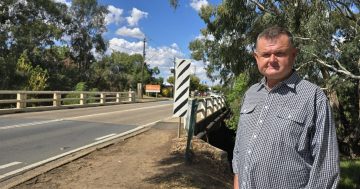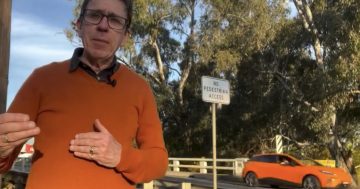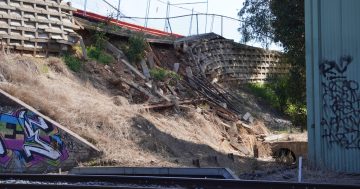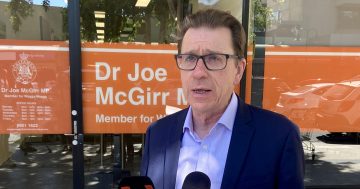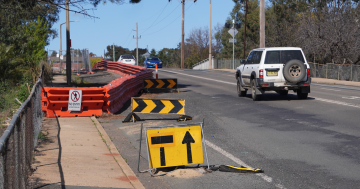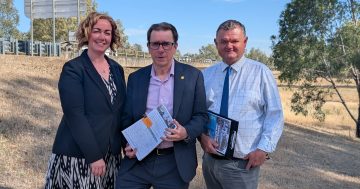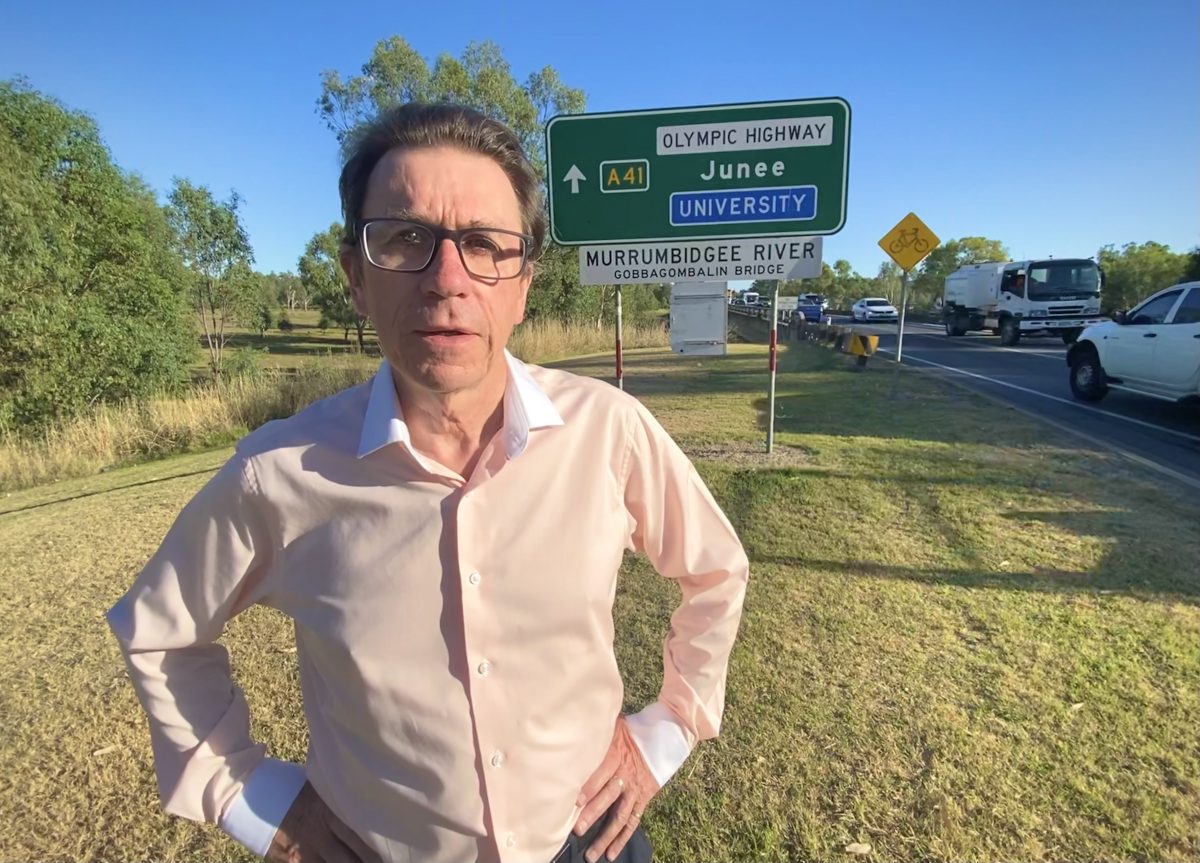
Dr Joe McGirr says Transport for NSW has its priorities backwards on Wagga’s bridges. Photo: Chris Roe.
The future of Wagga’s bridge infrastructure was front and centre in NSW Parliament this week as Dr Joe McGirr laid out the case for Gobbagombalin Bridge and Marshalls Creek and received a positive response from Regional Transport and Roads Minister Jenny Aitchison.
“We are definitely changing priorities. We are prioritising Wagga Wagga – that is the first point – and we are listening to the community,” Ms Aichison said on Wednesday (31 May).
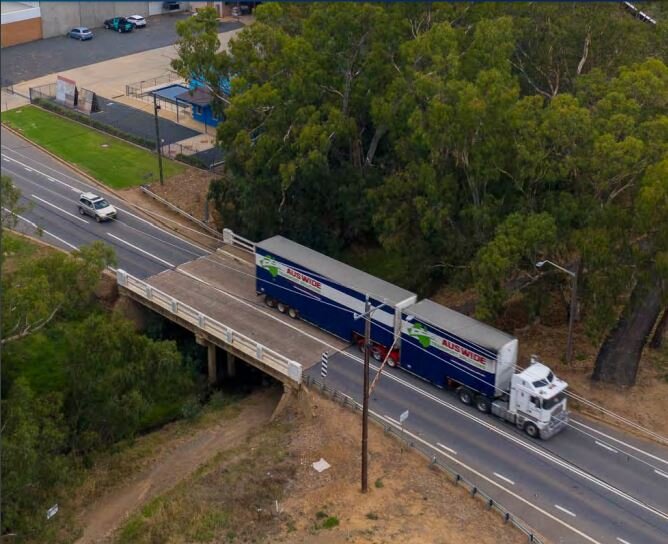
The choke point at Marshalls Creek Bridge. Photo: Transport for NSW.
Prioritising solutions for the bottlenecks on the Sturt and Olympic Highways has become the focus after Transport for NSW revealed last week that the promised widening of Marshalls Creek Bridge from two lanes to four would be shelved in favour of traffic lights at either end of the Gobba Bridge.
The expansion of the notorious Marshalls Creek choke point on Wagga’s busiest stretch of road was thought to have been a done deal since money was allocated in 2018 and it was confirmed that all the planning had been finalised in 2022.
“We had a lot of broken promises under the former government and a lot of delays—projects proceeded at a glacial pace—which led to cost overruns,” said Ms Aitchison.
Speaking in the upper house on Wednesday, Nationals MLC Wes Fang responded that the work had been about to begin when wet weather, flooding and potholes caused the work crews to be diverted to deal with the emergency.
“The real fear in rural and regional communities is that the city-centric Labor Government is abandoning them,” he said.
Dr McGirr accepted that delays had led to cost blowouts as the community debated the best way forward on the Gobba Bridge, but said that Transport for NSW had not listened to community feedback and needed to reexamine its priorities.
“Planning has taken almost five years with repeated calls from the community to reconsider the designs proposed for the Gobba bridge intersections. Now it has become clear that there may not be sufficient funds to do the Gobba Bridge intersection upgrades and the Marshalls Creek Bridge,” he said.
“The community is still not supportive of the work on the Gobba Bridge intersections and the survey results from the Committee 4 Wagga showed that more than half the residents were opposed to this work or had other suggestions.
“We should be doing the Marshalls Creek Bridge as a priority, and at the same time undertake a full costing and feasibility study of the duplication of the Gobba Bridge and second river crossing options to be completed within the next two years instead of the intersection upgrades.”
In pressing the case for a longer-term solution, Dr McGirr pointed to 20th-century opposition to the scale of the design for the nation’s largest bridge.
“John Bradfield was ridiculed for designing and building the Sydney Harbour Bridge with eight lanes. But who is laughing now? He was right,” he said.
“The cross-river planning needs to happen in the next two years so that we can plan a road map forward to manage growth, ease traffic congestion and improve safety on our roads. We must act to keep our community safe and supported in a great place to live.”
Ms Aitchison has committed to a return visit to Wagga and, while a date has yet to be set, she has committed to meeting with stakeholders to discuss community concerns.
“I’ll be in the region in the coming weeks to meet with Dr McGirr, Cr (Dan) Hayes and other Councillors, and other stakeholders so I can spend time on the ground better understanding these local issues,” she said.
“It is important to listen to the views of communities in regional NSW after they were largely ignored by the former government.
“We will have to make tough decisions, but we want to make them in alignment with the community’s wishes.”










